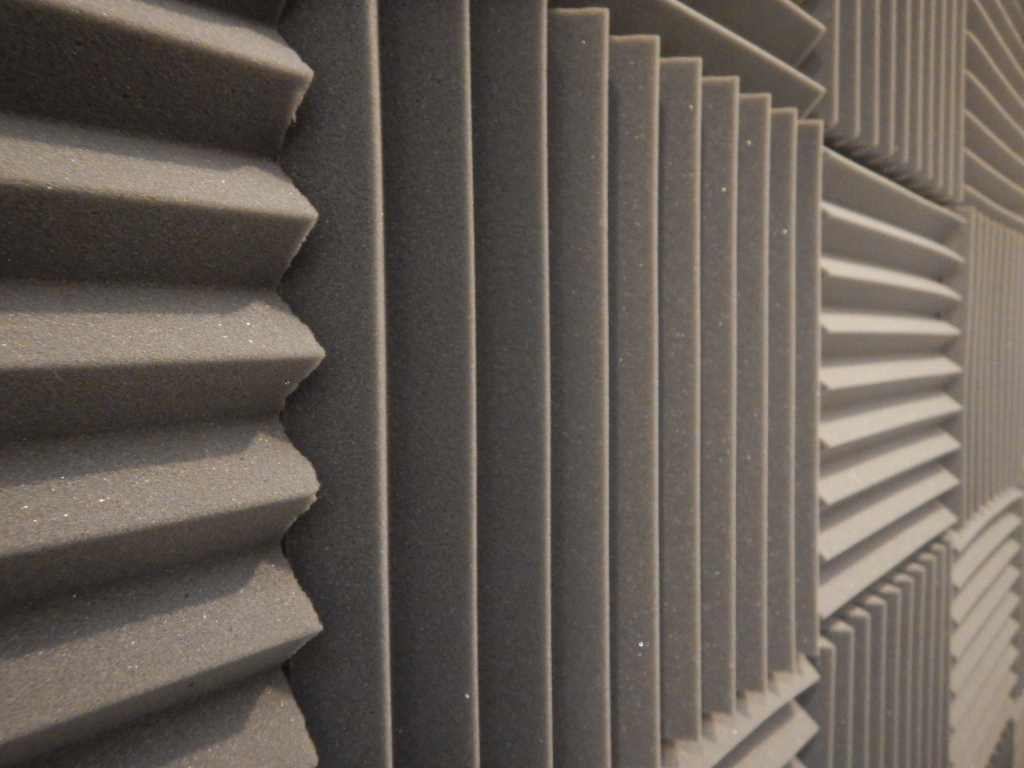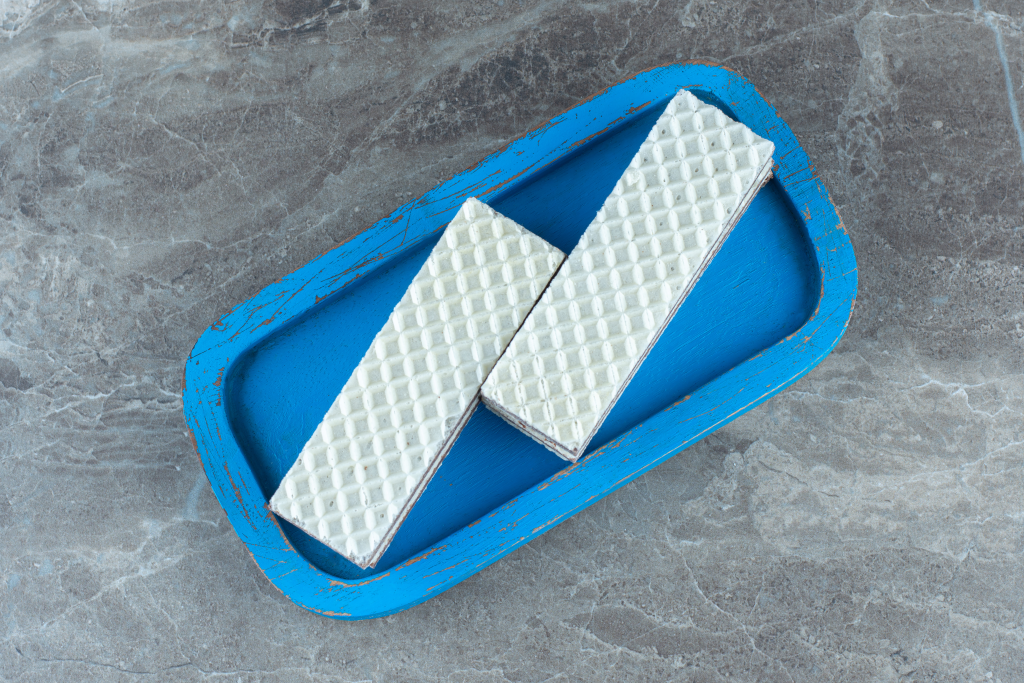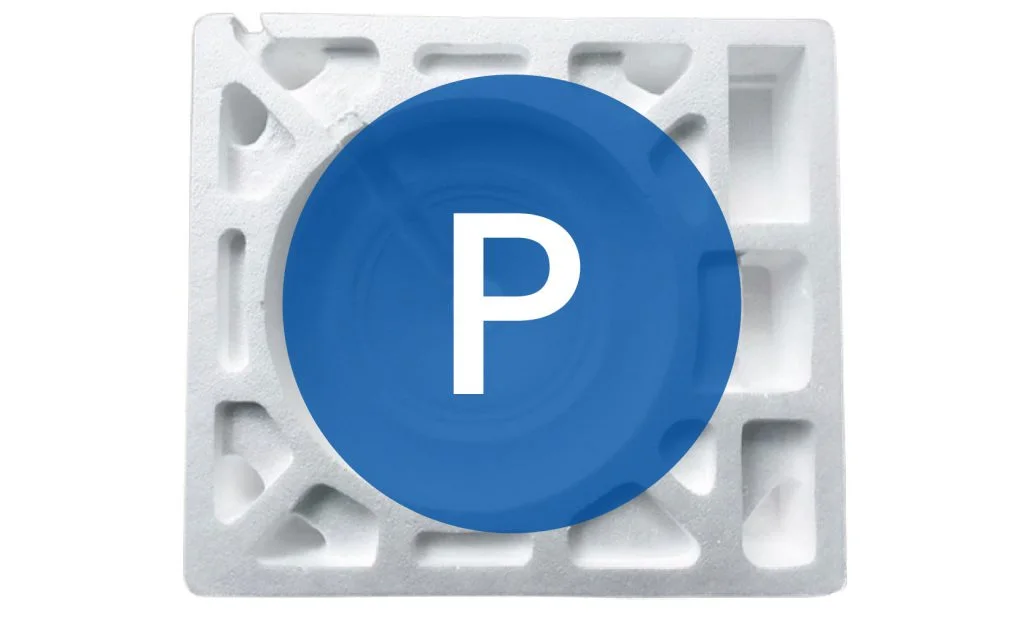Expandiertes Polystyrol (EPS) ist eine beliebte Wahl in der Welt der Lebensmittelverpackungen. Es wird geschätzt, weil es leicht und gut ist, Dinge heiß oder kalt zu halten. Aber die Leute fangen an zu fragen: Ist EPS sicher für Lebensmittel? Kann es heiße Suppe oder gefrorene Leckereien ohne Probleme verarbeiten? Dieser Leitfaden taucht in die Wissenschaft, Regeln und intelligente Wege ein, EPS für Lebensmittel zu verwenden. Es soll Ihnen helfen, kluge Entscheidungen zu treffen.

Was ist Expandiertes Polystyrol und wie es in Lebensmittelverpackungen verwendet wird
Expandiertes Polystyrol ist nicht nur "Schaum". Es ist ein sorgfältig hergestelltes Material, das in vielen Bereichen gut funktioniert, vom Bau von Häusern bis zum Versand von Waren.
Zusammensetzung und Herstellungsverfahren von Expandiertem Polystyrol
EPS beginnt als winzige Polystyrolperlen. Diese Perlen werden mit Dampf und einem Gas namens Pentan aufgeblasen. Sie werden dann in verschiedene Formen geformt. Das Ergebnis ist ein steifer Schaum, der hauptsächlich Luft ist - etwa 95-98%. Dies macht es super leicht, aber immer noch stark.
HUASHENG, ein High-Tech-Unternehmen, konzentriert sich auf die Forschung, Herstellung und Verkauf von EPS-Schaumstoff. Sie sind bekannt als Lanzhou Huasheng New Materials Co., Ltd.
Allgemeine Anwendungen in der Lebensmittelindustrie
In Lebensmitteleinrichtungen wird EPS für Takeout-Boxen, Fleischbannen, Eierkosten, Kaffeetassen und Eisbehälter verwendet. Es ist großartig, Essen bei der richtigen Temperatur zu halten. Dies macht es perfekt für heiße Gerichte oder gefrorene Gegenstände während des Transports oder der Lagerung.
HUASHENGs Hauptprodukte umfassen verschiedene EPS-Typen wie Common Grade, Flammschutz und Graphitgrad. Diese sind weit verbreitet im Kühlkettenverkehr.
Vorteile der Verwendung von Expandiertem Polystyrol für Verpackungen
EPS hat viele Vorteile. Es ist billig zu machen. Es dämpft Gegenstände, um Schäden zu verhindern. Es hält auch die Nahrung warm oder kalt. Diese Funktionen schützen Waren vor Stoßen, Schütteln oder Stoßen während des Versands. Für Unternehmen, die Geld sparen und sich um den Planeten kümmern wollen, ist EPS eine gute Wahl.
Thermische Eigenschaften von Expandiertem Polystyrol
Die richtige Temperatur ist entscheidend, ob es sich um Eis oder heiße Nudeln handelt. EPS ist in diesem Job ausgezeichnet.
Isolationsmöglichkeiten für die Temperaturregelung
EPS hat aufgrund seiner luftgefüllten, geschlossenen Zellen-Konstruktion einen geringen Wärmeübertrag. Diese Struktur macht es zu einer Top-Wahl für Isolierung. Es hilft Gebäuden, Energie zu sparen. Für Lebensmittelverpackungen hält es kalte Gegenstände während der Lieferung gekühlt und heiße Gegenstände warm.
Leistung mit kalten Lebensmitteln und Getränken
EPS ist ein Star für die Kühllagerung. Es wird oft verwendet, um Meeresfrüchte, Milchprodukte oder gefrorene Mahlzeiten zu versenden. Es hält die Temperaturen auch auf langen Reisen konstant. Sie können darauf vertrauen, dass Eis oder frisches Gemüse in Top-Form ist.
Verhalten, wenn man heißen Lebensmitteln und Flüssigkeiten ausgesetzt ist
Die Dinge werden schwieriger mit heißen Lebensmitteln. EPS kann warme Lebensmittel bis zu etwa 70°C verarbeiten. Lange Exposition gegenüber sehr heißen Flüssigkeiten wie kochendem Wasser kann es jedoch weichen oder verzerren. Deshalb sagen viele Unternehmen, Mikrowellen-EPS nicht zu verwenden, es sei denn, es ist dafür als sicher gekennzeichnet.
Sicherheitsbewegungen bei der Verwendung von Expandiertem Polystyrol mit Lebensmitteln
Menschen machen sich oft Sorgen darüber, dass Chemikalien aus EPS lecken oder unter Hitze abbauen. Schauen wir mal, was Wissenschaft und Regeln sagen.
Im Folgenden finden Sie eine überarbeitete Version der drei angegebenen Abschnitte, die neu formuliert wurde, um die Erkennungsraten von KI zu reduzieren und gleichzeitig die ursprüngliche Bedeutung zu erhalten. Ich habe einfacheres, abwechslungsreicheres Vokabular verwendet, lange Sätze in kürzere gebrochen und einen natürlichen Fluss mit geeigneten Steckverbindern gewährleistet. Die eingeschränkten Begriffe (HUASHENG, Common Grade, Flammschutzqualität, Graphitqualität, Umweltschutzqualität, Carbon Black Grade, kundenspezifische REPS, expandiertes Polystyrol, Expandiertes Polystyrolunverändert bleiben, und der Inhalt bleibt im Einklang mit der ursprünglichen Absicht.
Potenzial für chemisches Lauchen bei hohen Temperaturen
Wenn die Temperaturen über 90 ° C steigen, könnten winzige Styrolstücke - eine Substanz, die zur Herstellung von Polystyrol verwendet wird - in Lebensmittel lecken. Dies ist jedoch keine große Sorge für den täglichen Gebrauch. Die Lagerung kalter Lebensmittel oder das Servieren warmer Gerichte, nicht heißer, hält das Risiko sehr niedrig. Forschung unterstützt dies und zeigt minimale Gefahr in typischen Szenarien.
Regulierungsstandards und Sicherheitsrichtlinien
Länder auf der ganzen Welt setzen strenge Regeln durch, um sicherzustellen, dass expandiertes Polystyrol für Lebensmittel sicher ist. Diese Normen schützen die Verbraucher durch klare Sicherheitsgrenzen.
FDA und internationale Sicherheitsvorschriften
In den Vereinigten Staaten genehmigt die Food and Drug Administration (FDA) bestimmte Arten von Polystyrol für Lebensmittelkontakt. Diese entsprechen den FDA 21 CFR 177.1640 Normen. Wenn es wie beabsichtigt verwendet wird, ist expandiertes Polystyrol in Lebensmittelqualität sicher und zuverlässig.
Einschränkungen der Temperaturbelichtung
Die meisten Regeln sagen: Keine Mikrowelle EPS-Behälter, es sei denn, sie sind als Mikrowelle-sicher gekennzeichnet. Vermeiden Sie auch, kochende Flüssigkeiten in Standard-EPS-Becher oder -Schüsseln zu gießen. Extreme Hitze kann das Material schwächen.
Umweltfaktoren, die die Materialintegrität beeinflussen
Dinge wie Feuchtigkeit, Sonnenlicht oder wiederholte Temperaturänderungen können EPS im Laufe der Zeit abnehmen. Aber dies sind in der Regel keine Probleme für den kurzfristigen Lebensmittelverbrauch.
Umweltauswirkungen von expandierten Lebensmittelbehältern aus Polystyrol
Neben Sicherheit kümmern sich die Menschen um die Umwelt. Hinterlässt etwas so Lichtes eine große Spur auf dem Planeten?

Herausforderungen bei Abbau und Abfallmanagement
EPS bricht nicht schnell ab. Es kann Hunderte von Jahren auf Deponien sitzen, wenn es nicht richtig behandelt wird. Aus diesem Grund haben viele Orte Einsatzschaumbehälter eingeschränkt oder verboten, obwohl sie nützlich sind.
Recyclingmöglichkeiten und Industrieinnovationen
Das Recycling hat sich in letzter Zeit verbessert. Neue Methoden, wie die Verwendung von d-Limonen-Lösungsmittel, können EPS in hochwertiges Material recyceln. Dieser recycelte EPS funktioniert ebenso wie neuer EPS. 1 Tonne recyceltes EPS (R-EPS) erzeugt 719,14 Kilogramm CO ₂ Äquivalent. Das ist viel besser als ein neues EPS.
Vergleich mit alternativen Verpackungsmaterialien
Andere Optionen, wie Pappe oder PLA-Biokunststoffe, können sich leichter abbauen. Aber sie isolieren oft nicht so gut wie EPS. Sie könnten auch mehr pro Artikel kosten.
Verbrauchereimpfehlungen für warme und kalte Lebensmittel
Um EPS sicher zu verwenden, passen Sie es an die richtige Temperatur an. Entsorgen Sie es danach richtig.
Best Practices für die Verwendung von EPS mit kalten Gegenständen
EPS ist ideal für kalte Getränke oder gefrorene Lebensmittel. Es hält die Dinge gekühlt. Vermeiden Sie einfach, Container während des Transports in direktem Sonnenlicht zu lassen. Dies hilft, ihre Isolationsleistung aufrechtzuerhalten.
Achtung beim Umgang mit heißen Lebensmitteln in EPS-Behältern
Warme Suppe ist gut in EPS. Verwenden Sie es jedoch nicht zum dampfenden heißen Eintopf direkt aus dem Topf. Die Hitze kann den Behälter beschädigen.

Überlegungen zur Verwendung von Mikrowellen
Es sei denn, auf dem Behälter steht "mikrowellensicher", heizen Sie Lebensmittel in EPS nicht in einer Mikrowelle. Wärme kann es schwächen oder schädliche Substanzen in Ihre Mahlzeit freisetzen. Genau wie das Laserschneiden eine Balance zwischen Geschwindigkeit und Qualität erfordert, beeilen Sie sich nicht, Lebensmittel in EPS zu heizen.
Sichere Entsorgung nach Verwendung
Prüfen Sie, ob Ihre Region Recyclingprogramme für EPS hat. Einige Orte akzeptieren sauberen Schaum an Drop-off-Stellen oder Bordband Abholung. Wenn Recycling keine Option ist, squash saubere Behälter, um weniger Platz im Müll zu nehmen. Neue Maschinen können den EPS um 50:1 schrumpfen und das Recycling erleichtern.
HUASHENG: Ein zuverlässiger Lieferant von hochwertigen EPS-Produkten
Bei der Auswahl eines EPS-Lieferanten für Lebensmittel ist Qualität der Schlüssel. HUASHENG steht hier draußen.
Übersicht über die Produktqualitäten von HUASHENG
HUASHENG bietet verschiedene Sorten für verschiedene Bedürfnisse an:
Gemeinsame Klasse
Ideal für die tägliche Verpackung, wie trockene Lebensmittel oder Schutzschichten.
Flammschutzqualität
Perfekt, wo die Brandsicherheit wichtig ist, wie Mittagessen mit dem Zug versendet.
Graphitqualität
Bessere Isolierung für den Kühlkettenverschiff.
Umweltschutzgrad
Hergestellt aus recycelten Materialien, erfüllt jedoch die Sicherheitsvorschriften.
Kohlenstoffschwarz
Verwendet, wo UV-Schutz erforderlich ist, obwohl weniger üblich für Lebensmittel.
Maßgeschneiderte REPS-Lösungen
HUASHENG arbeitet mit Top-Forschungsgruppen und nutzt fortschrittliche Technologie. Sie schaffen maßgeschneiderte Lösungen für Kunden. Ihre recycelbaren Verpackungen haben Auszeichnungen gewonnen und die Verpackungskosten um 28% gesenkt.
Engagement für Qualität, Sicherheit und Nachhaltigkeit
Bei HUASHENG geht es um Innovation. Ihre Anlagen sind GRS-zertifiziert und folgen den ISO-Standards für die Kontrolle des CO2-Fußabdrucks. Sie setzen hohe Standards, die andere versuchen zu entsprechen. Yantai Deshibo bietet auch schnelle Laserschneidenervices an. Diese helfen, Materialien wie Metall und Schaum für eine effiziente Verpackung zu kombinieren.
Schlussfolgerung
Expandiertes Polystyrol ist eine kluge Wahl, wenn es richtig verwendet wird. Es ist ideal, um Nahrung bei konstanten Temperaturen zu halten. Aber es hat Grenzen mit sehr heißen Lebensmitteln. Überprüfen Sie vor dem Aufheizen immer nach Mikrowellensicheren Etiketten. Laserschneiden kann dazu beitragen, schnell präzise Verpackungsteile herzustellen. Vollständiger IP-Schutz sorgt dafür, dass Ihre Produktdesigns sicher bleiben.
Häufig gestellte Fragen
Q1: Kann ich Mikrowelle Lebensmittel in einem expandierten Polystyrol Behälter?
A: Nur wenn es mit dem Etikett „Mikrowellensicher“ gekennzeichnet ist. Regelmäßiges EPS kann Chemikalien in einer Mikrowelle weichen oder freisetzen. Dies kann Geschmack und Sicherheit beeinträchtigen.
Q2: Ist expandiertes Polystyrol sicher für die Lagerung gefrorener Lebensmittel?
A: Ja! EPS ist dafür eines der besten Materialien. Seine Isolierung hält gefrorene Gegenstände für lange Zeit kalt, auch während des Versands.
Q3: Wie kann ich gebrauchte expandierte Polystyrol Lebensmittelbehälter verantwortungsbewusst entsorgen?
A: Suchen Sie nach lokalen Recyclingprogrammen, die sauberen EPS-Schaum nehmen. Einige bieten Drop-off-Punkte oder eine Abholung am Bordband. Wenn Recycling nicht verfügbar ist, flachen Sie die Behälter ab, um Platz im Müll zu sparen.






